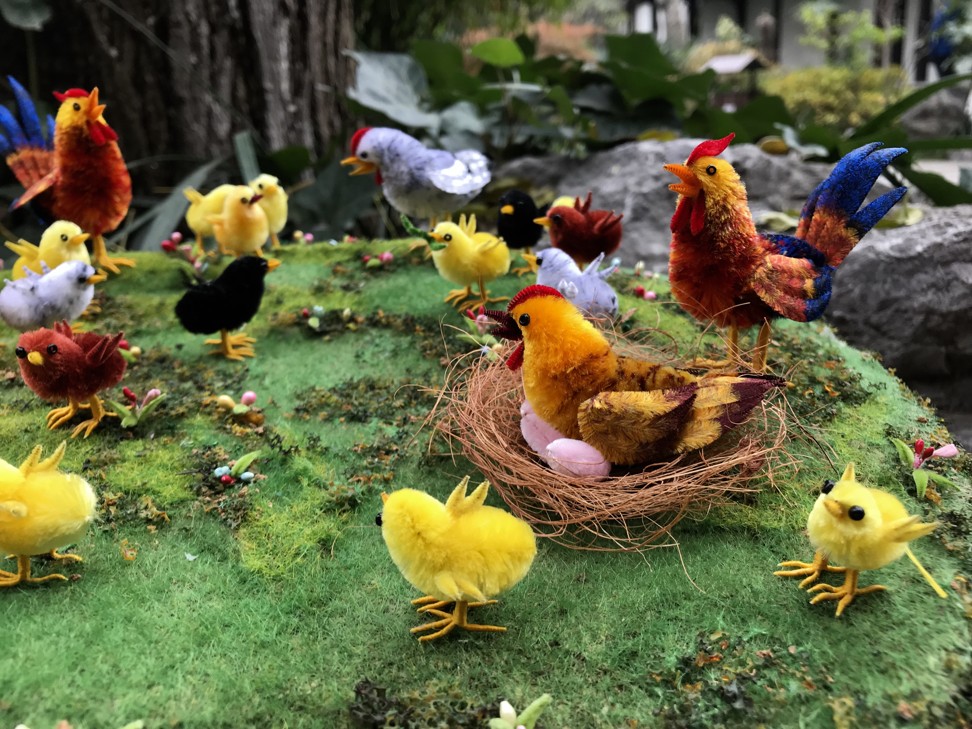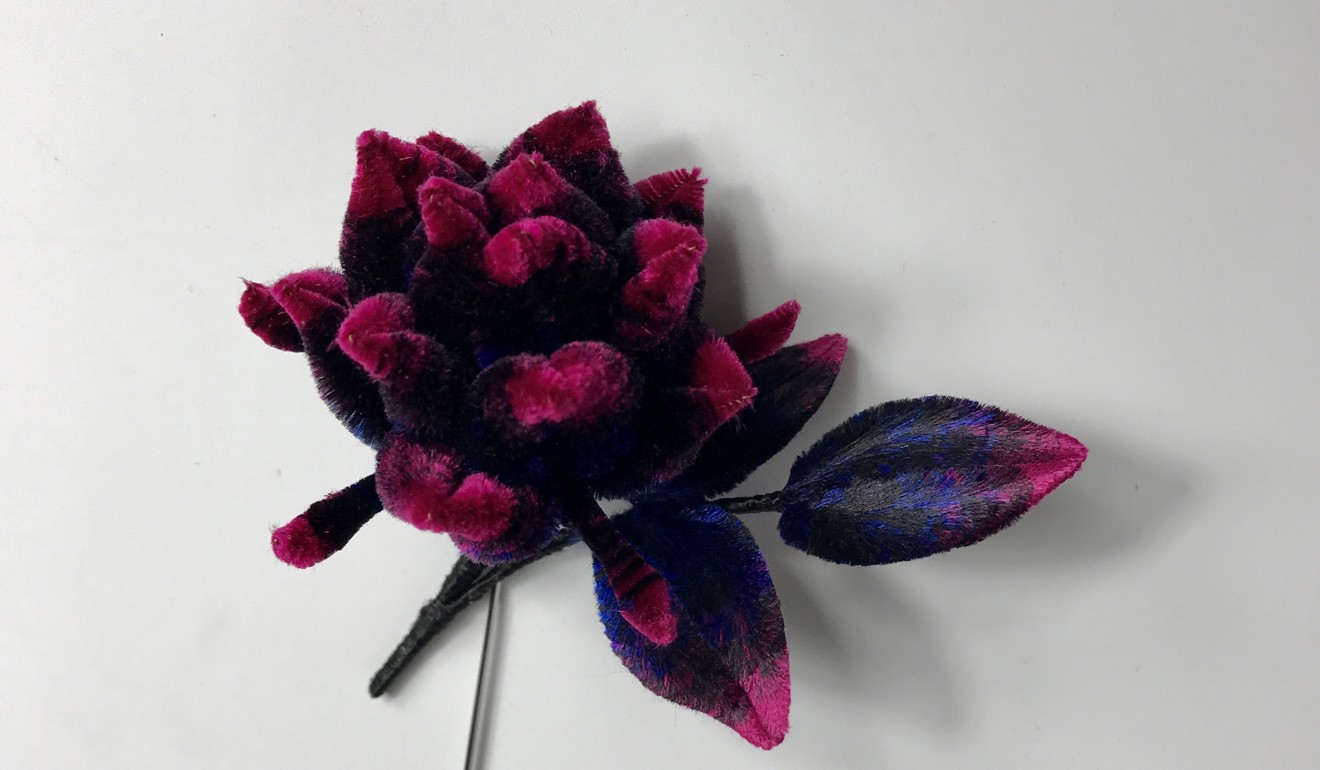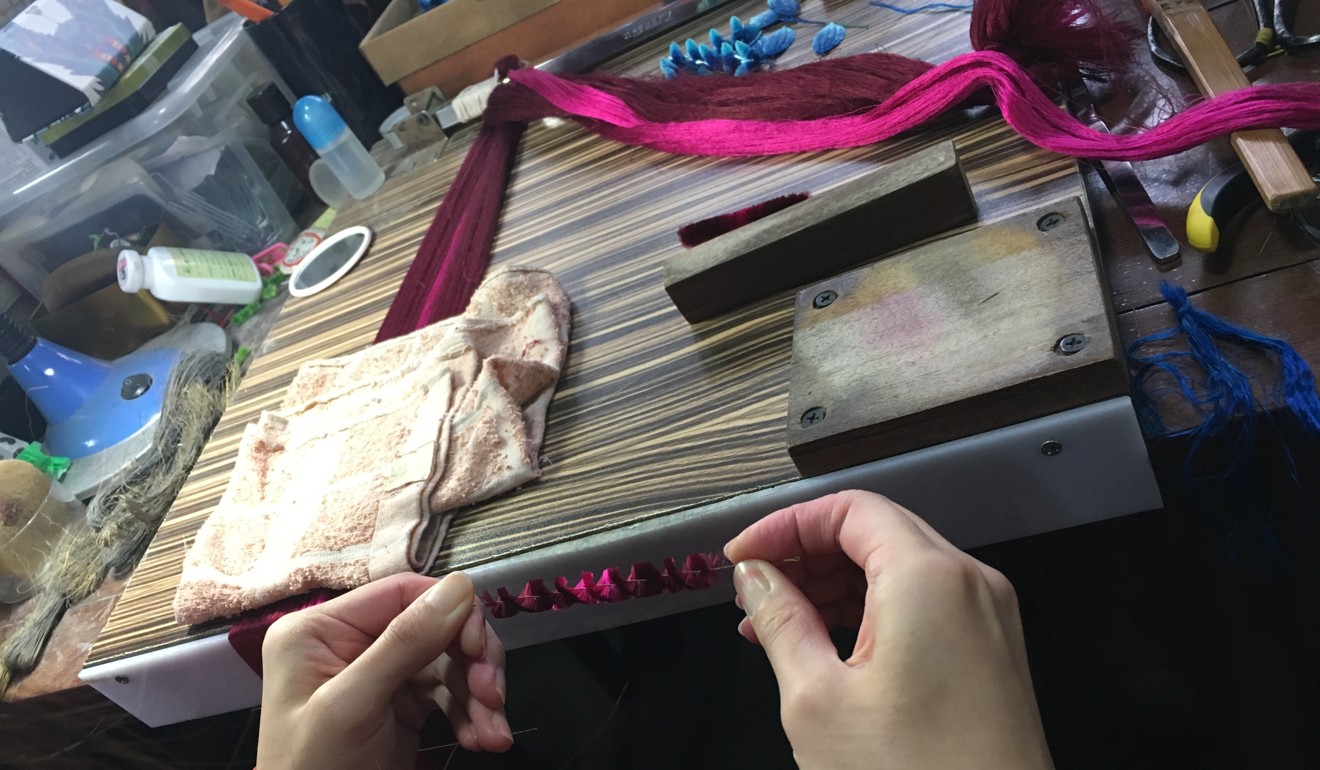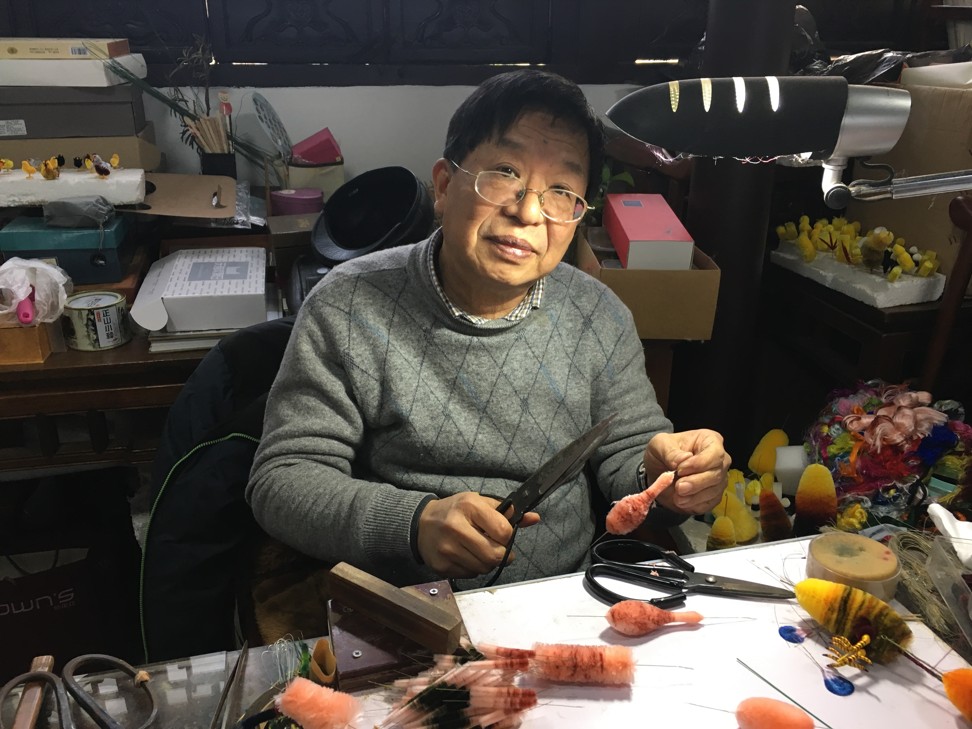
Meet the Chinese artisan fighting to keep his silky skills alive
The art of making velvet flowers, or ronghua, dates back centuries, and one man is determined to keep it blooming
Zhao Shuxian is a craftsman battling to keep the ancient Chinese art of velvet flower making alive.
Born and raised in Nanjing, capital of Jiangsu province, at the heart of eastern China’s silk-producing Yangtze River Delta region, Zhao began his more than 40-year career as a ronghua creator as a 19 year old at a state-owned factory.
The art of making ronghua – literally “velvet flower” – dates back to the Tang dynasty (618-907) and refers to the creation of not only floral displays, but also animal shapes from fine silk on a twisted wire frame.
The beautiful designs produced by artisans in centuries gone by were highly prized by China’s ruling classes, including its emperors. Now, however, due to changes in tastes and production methods, Zhao is one of only a handful of people still making them.
The 63-year-old works from a studio at the Nanjing Folk Museum. As well as making items for sale, his creations have been used in fashion shows and television productions.
He also puts on demonstrations for tourists and for the past three years has been training apprentices. He currently has three young women under his tutelage and said he would be happy to take on more, if only their families would allow it.
“Many young women have shown interest in learning the art,” Zhao said. “But most of them don’t take it any further because of pressure from their families, who don’t regard it as a real profession.”
While Zhao was reluctant to go into the specifics of his cash flow situation, the days when making ronghua could be regarded as a lucrative business are long gone.
To create a single silk rooster takes him more than a day, he said. Yet a group of them sells for as little as 200 yuan (US$30).
Nonetheless, the master and his apprentices do have a following, albeit it small one, of mostly ancient Han Chinese clothing enthusiasts. The first ronghua were almost always velvet flowers designed to be worn by women in their headgear at weddings, festivals and other special occasions.
They were also regarded as a symbol of luck, as the word, when spoken, sounds similar to the Mandarin for “prosperity”.
While no one knows for sure where the craft originated, it reached its peak during the Ming (1368-1644) and Qing (1644-1911) dynasties, when vast numbers of velvet flowers were produced for the imperial concubines and handmaids in Beijing’s Forbidden City. It also prospered in Nanjing due to the abundance of silk offcuts that were left after making brocade, another handicraft for which the city was famed.
“The first step in making ronghua is to boil the silk to soften it,” Zhao said.
“It’s then dyed, before being rolled evenly onto thin copper wires. These velvet sticks are then trimmed and twisted into different shapes, and the parts are assembled to make the final product – a flower or a bird,” he said.

While the popularity of the craft waned at home after the founding of the People’s Republic in 1949, it continued to find an audience overseas, Zhao said.
“When I was working at the Nanjing Handicraft Flower Factory in the 1970s, it was still a key industry for the city,” he said.
“But because we were selling so little at home, we targeted overseas markets and began making specialist decorations for Western festivals and celebrations,” he said.
“The most popular products were things like chicks, rabbits and eggs for Easter, and Santas and snowmen for Christmas.”
Zhao said that as the bulk of the sales were overseas, it was also a good way for the local government to boost its foreign exchange reserves.

But the good times could not last forever. The proliferation of cheap, machine-made alternatives and the increased availability of real flowers meant that sales of ronghua steadily slumped.
By the 1990s, the industry was on its knees. Zhao’s factory closed and he left the business for the first time in more than 20 years.
“We were the last batch of workers doing the craft,” he said. “A lot of them were at retirement age by then and gave up working altogether to look after their grandchildren.”
That could have been the end of the story, had it not been for a request Zhao received in 2008 to set up a studio at the folk museum and put on regular demonstrations for its visitors.
After a decade-long hiatus – and two years after the art form had been recognised by the Jiangsu government as part of the province’s intangible cultural heritage – Nanjing’s ronghua industry was reborn.
One of the main reasons Zhao was able to open the studio was that unlike many of his fellow artisans, who tended to specialise in a particular aspect of design or production, he was familiar with the entire process, he said.

Despite it being an ancient art form, most of the people who attend his demonstrations, and buy his and his apprentices’ work, are young, Zhao said.
“Most of them are college students and office workers, as well as collectors of traditional handicrafts.”
But while the museum gets visitors and buyers from all over China, the numbers are small.
“It’s a niche market,” he said.
As a result, Zhao said that although he and his team continued to develop new ronghua products to attract new audiences, he feared for the future of the craft.
“There are college graduates who want to do it for a living, but their parents won’t let them. We like to think that all professions are equal, but they’re not,” he said.
In the meantime Zhao said he would continue to pass on his skills in the hope that they might still be around in generations to come.
“Only when there are enough people doing it can the tradition live on.”



